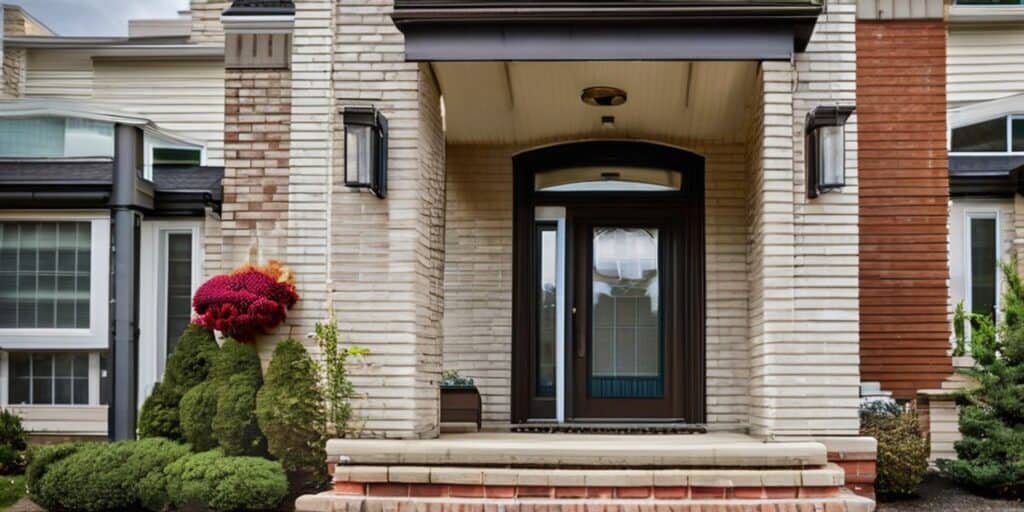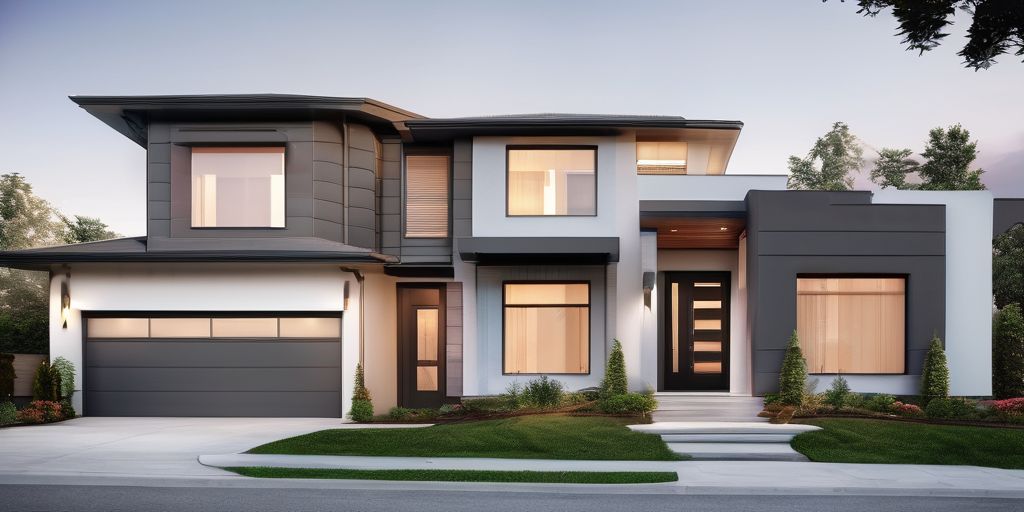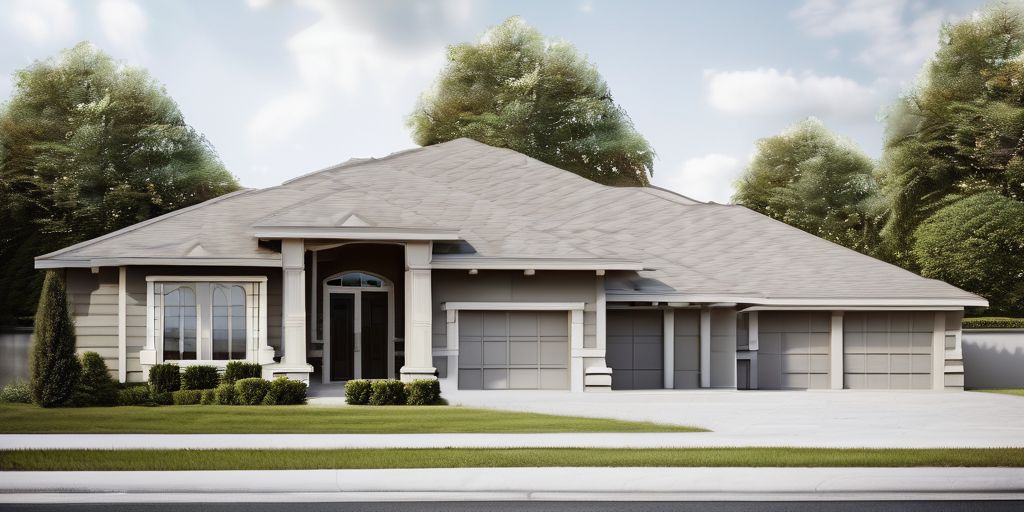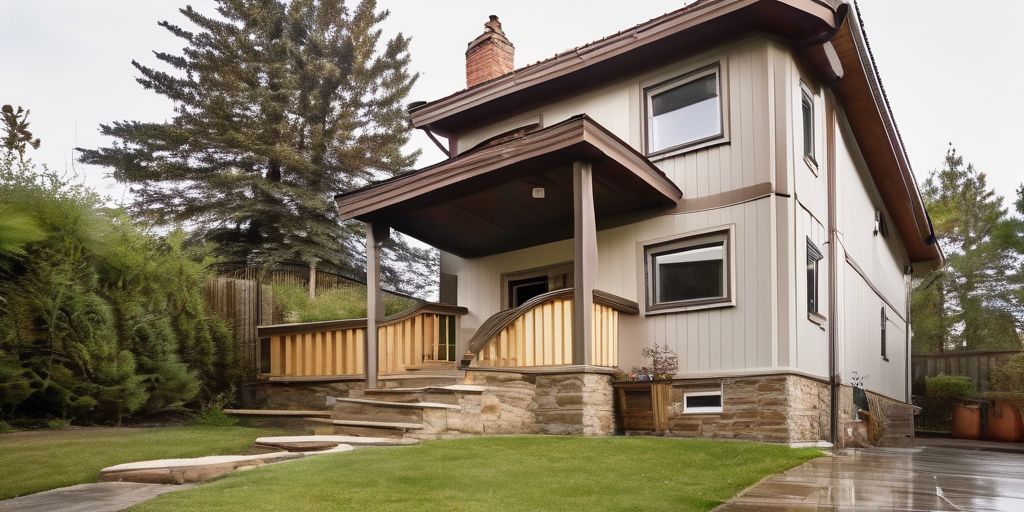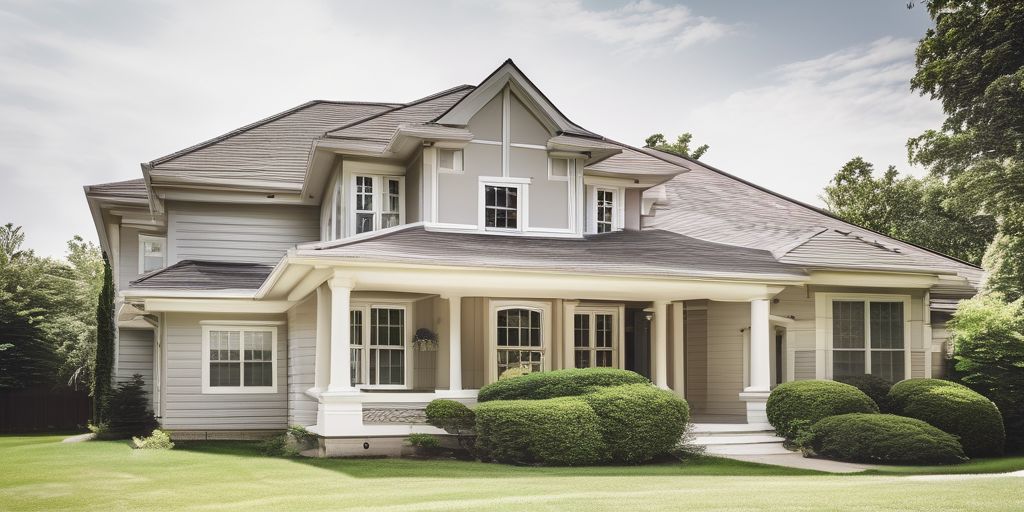Kitchener-Waterloo’s diverse climate presents unique challenges for exterior brick painting projects. Understanding the seasonal temperature fluctuations and preparing adequately can ensure the longevity and aesthetic appeal of a painted brick exterior. This article provides insights into adapting to the local weather conditions for painting brick exteriors, from choosing the right materials to maintaining the finish throughout the year.
Key Takeaways
- Knowledge of Kitchener-Waterloo’s seasonal temperatures is crucial for planning exterior brick painting, ensuring the paint adheres properly and withstands weather-related challenges.
- Selecting the appropriate paint and materials designed for variable climates can enhance durability and protect the brickwork from extreme cold and heat.
- A step-by-step guide helps homeowners and professionals navigate the painting process, taking into account the temperature-sensitive stages of surface preparation, application, and curing.
- Routine maintenance and proactive protection of painted brick exteriors are essential to combat the effects of Kitchener-Waterloo’s fluctuating weather and preserve the building’s aesthetic.
- Leveraging local expertise, including consultations with painting professionals and participation in community programs, can provide valuable insights and support sustainable painting practices.
Understanding the Climate of Kitchener-Waterloo for Exterior Painting
Seasonal Temperature Ranges and Their Impact on Paint
The climate in Kitchener-Waterloo presents unique challenges for exterior brick painting, particularly due to the wide range of temperatures experienced throughout the year. Understanding these temperature variations is crucial for selecting the right time to paint and ensuring the longevity of the paint job.
- Spring (Mar-May): Fluctuating temperatures with potential for rain, requiring careful timing for painting.
- Summer (Jun-Aug): Generally warm, but with occasional heat waves that can affect paint drying times.
- Fall (Sep-Nov): Cooler temperatures and increased precipitation, making early fall the optimal painting window.
- Winter (Dec-Feb): Often too cold for painting, as most paints require a minimum temperature to properly adhere and cure.
Temperature and humidity levels are key factors that influence the drying and curing process of paint. It is essential to choose a painting period when the weather is likely to be stable. Additionally, the paint itself should have properties suitable for the local climate, such as UV resistance and flexibility to withstand temperature changes.
When planning an exterior painting project, always consider the seasonal weather patterns and choose your painting days with an eye on the forecast to avoid weather-related setbacks.
The Best Times of Year to Paint Brick Exteriors
When planning to paint brick exteriors in Kitchener-Waterloo, timing is crucial to ensure the paint adheres properly and has sufficient time to dry. The ideal periods for exterior painting are late spring and early fall, when the weather is typically mild and humidity levels are moderate. Here’s a quick guide to help you choose the best time for your painting project:
- Late Spring (May to June): Temperatures are warm enough to support paint drying, but not so hot as to cause it to dry too quickly.
- Early Fall (September to October): Cooler temperatures reduce the risk of paint blistering, and there’s less chance of rain compared to spring.
It’s important to avoid painting in extreme temperatures. Paint should not be applied when it’s below 10°C or above 30°C. Additionally, always check the weather forecast for unexpected rain or high winds, which can ruin a fresh paint job.
Remember, the specific timing can vary year to year, so it’s wise to monitor local weather patterns before scheduling your project. If you’re unsure, consulting with local painting professionals can provide valuable insights tailored to Kitchener-Waterloo’s climate.
Preparing for Weather-Related Challenges in Exterior Painting
When tackling the task of exterior painting in Kitchener-Waterloo, it’s crucial to consider the local climate’s quirks. Practicing in less visible areas improves technique and ensures that the final result meets your expectations. Here are some tips to help you prepare for weather-related challenges:
- Organize your tools and materials beforehand to enhance safety and foster a more creative work environment.
- Always check the weather forecast; sudden changes can affect the quality of your work.
- Be mindful of the temperature; paint behaves differently in cold versus warm conditions.
Exterior painters must also account for factors like wind and humidity, which can significantly impact drying times and the overall success of the project. A well-prepared painter will have contingency plans for unexpected weather shifts.
Remember, the key to a successful exterior painting project is not just skill, but also preparation and adaptability to the local weather conditions.
While the landmarks of Kitchener-Waterloo, such as the iconic Walper Hotel, stand as testaments to architectural resilience, your painted surfaces too can endure with the right approach.
Choosing the Right Paint and Materials for Kitchener-Waterloo’s Weather
Types of Paint Suitable for Cold and Warm Climates
When painting brick exteriors in Kitchener-Waterloo, selecting the appropriate paint is pivotal for both the longevity and appearance of your home. The climate plays a significant role in determining the type of paint that will perform best.
- For warm climates, heat-resistant paints are advisable as they can withstand the high temperatures during summer without peeling or blistering.
- In contrast, cold-weather solutions are essential for winter to prevent cracking and ensure the paint adheres well despite the low temperatures.
All-acrylic paints are renowned for their weather-resistance qualities, making them a suitable choice for the fluctuating temperatures in Kitchener-Waterloo. It’s important to consider not only the immediate aesthetic appeal but also the maintenance and durability that will contribute to the paint’s longevity.
Proper preparation and adaptation to weather conditions are key to a successful exterior brick painting project.
Regular upkeep, including routine checks and touch-ups, will enhance the durability and aesthetic appeal of your painted brick home. By choosing the right paint and employing advanced techniques, you can ensure that your home’s exterior remains vibrant and protected through the seasons.
Importance of Quality Primers and Sealants
When painting brick exteriors in Kitchener-Waterloo, the use of high-quality primers and sealants cannot be overstated. Proper priming ensures that the paint adheres well to the brick surface, providing a uniform base for the topcoat. This is particularly important in a climate with fluctuating temperatures, as it helps prevent peeling and cracking.
Sealants play a crucial role in protecting the painted surface from moisture intrusion, which can lead to mold growth and efflorescence. A good sealant will also provide UV protection to prevent the paint color from fading under the harsh sun.
- **Primer Functions: **
- Adhesion promoter
- Stain blocker
- Corrosion inhibitor
- **Sealant Benefits: **
- Moisture barrier
- UV protection
- Flexibility to accommodate temperature changes
Proactive maintenance is crucial for painted brick homes in Kitchener-Waterloo. Regular inspections, eco-friendly cleaning, and durable paints protect against weathering for lasting beauty and resilience.
Choosing the right products is essential for the longevity of your exterior paint job. It’s worth investing in quality materials that will stand up to the local weather conditions, ensuring that your home remains vibrant and well-protected year-round.
Tools and Equipment for Efficient Brick Painting
When undertaking the task of painting brick exteriors, especially in the variable climate of Kitchener-Waterloo, having the right tools and equipment is crucial for an efficient and successful project. Combining spray and brush techniques ensures a durable and attractive finish, maximizing the efficiency and quality of your exterior paint job.
For spray painting, a high-quality sprayer capable of delivering even coats is essential. It’s important to choose a model that can handle the type of paint you’re using and is suitable for outdoor conditions. On the other hand, brushes are indispensable for detail work and getting into the nooks and crannies that a sprayer might miss. A variety of brush sizes will be beneficial:
- Wide brushes for large surface areas
- Angled brushes for edges and corners
- Small brushes for precision work
Properly assess and prepare brick surfaces for a lasting paint job. This includes addressing any irregularities in the surface and ensuring that the brick is clean and dry before painting begins. Whether you decide to DIY or engage professional services available in Kitchener-Waterloo, preparation is key.
Remember, the choice of tools will also depend on the specific conditions of the project site. Factors such as the size of the area to be painted, the intricacy of the brickwork, and the current weather conditions will all influence the selection of tools.
Lastly, don’t forget the ancillary equipment such as ladders, tarps for protecting landscaping, and safety gear like goggles and masks. These items contribute to a safe and orderly work environment, allowing you to focus on the quality of your painting.
Step-by-Step Guide to Painting Brick Exteriors in Seasonal Weather
Surface Preparation and Cleaning Techniques
Proper surface preparation is crucial for the longevity and appearance of painted brick exteriors. Before applying any paint, the brick surface must be thoroughly cleaned and prepped to ensure the best adhesion and finish. Here are the essential steps to prepare your brick exterior for painting:
- Inspect the brickwork for any damage or issues like moss and remove them, preferably with a pressure washer on a wide spray setting to avoid damaging the brick.
- Address any troubleshooting common issues that may affect the painting process, such as efflorescence or mold.
- Working in small areas, scrub the surface with a firm, plastic-bristled brush in a circular motion to remove any soot stains or persistent dirt.
It’s important to allow the brick to completely dry after cleaning before proceeding with the application of primer or paint.
Remember, the effort put into surface preparation can significantly impact the final result and durability of your painted brick exterior.
Applying Primer and Paint in Varying Temperatures
When painting brick exteriors, the temperature and weather conditions can significantly affect the application and final outcome. Proper timing and technique are crucial for ensuring the paint adheres well and provides lasting protection.
- Always use primer specifically labeled for exterior use to ensure it can withstand the elements.
- Apply primer and paint when temperatures are between 10-30\u00B0C, with low humidity and no rain forecasted for at least 24 hours.
- Avoid painting in direct sunlight or when the wind is strong, as this can cause uneven drying.
Remember, the goal is to create a uniform coat that will stand up to Kitchener-Waterloo’s seasonal changes without cracking or peeling.
For best results, follow these guidelines:
- Check the weather forecast to plan your painting around ideal conditions.
- Prepare the surface thoroughly, removing any debris or loose paint.
- Apply primer evenly, covering all areas of the brick.
- Once the primer is dry, proceed with painting, using techniques suited to the current temperature and humidity levels.
Ensuring Proper Drying and Curing Times
When painting brick exteriors in Kitchener-Waterloo, it’s crucial to allow adequate time for the paint to dry and cure. The drying process is heavily influenced by the seasonal temperatures and humidity levels.
- In warmer months, paint can dry to the touch within a few hours, but it’s essential to wait longer for it to fully cure.
- During colder seasons, the drying time extends, and extra caution is needed to avoid moisture trapping.
Temperature and weather conditions play a pivotal role in how paint behaves after application. For instance, light rain can be withstood by exterior paint roughly after 2 hours, and after 4 hours, it should be resilient enough for heavier rainfall. However, it’s advisable to give the house several days to dry out completely, as this timeline can vary based on weather fluctuations.
It’s important to note that the chemical composition of the paint can be altered by external factors, such as denatured alcohol, leading to premature cracking or peeling.
To ensure a successful painting project, here’s a simple checklist to follow:
- Check the weather forecast for dry conditions.
- Apply paint during the recommended temperature range.
- Allow for extended drying times in cooler weather.
- Avoid painting if rain is expected within 24 hours.
Maintaining Your Painted Brick Exterior Through the Seasons
Routine Checks and Touch-Ups
To ensure the longevity and aesthetic appeal of your painted brick exterior, regular maintenance is essential. Here’s a simple routine to follow:
- Quarterly Inspections: Every season, take the time to inspect the painted surfaces for any signs of damage or wear. This includes looking for cracks, peeling, or fading.
- Annual Cleaning: Once a year, gently clean the brick to remove dirt, mildew, and other build-ups. Use soft brushes and avoid harsh chemicals to preserve the paint’s integrity.
- Prompt Repairs: Address any issues as soon as they’re spotted. Small touch-ups can prevent larger problems down the line.
Remember, using breathable paint and gentle cleaning methods can significantly protect against weathering. If you’re near a landmark like Victoria Park, the changing seasons can be particularly harsh on exterior surfaces, so extra vigilance may be required.
While it’s important to maintain the appearance of your home, never underestimate the protective qualities of a well-maintained paint job. It’s not just about aesthetics; it’s about preserving the structure beneath.
Protecting Paint from Extreme Weather Conditions
In Kitchener-Waterloo, where the weather can swing from hot summers to freezing winters, protecting your painted brick exterior is crucial. Proper preparation and the right choice of materials are key to ensuring that your paint job withstands the elements.
- Properly prepare the brick surface before painting to ensure the best adhesion and protection.
- Choose weather-resistant paint designed for longevity and durability against extreme conditions.
- Regular cleaning and inspections are essential to maintain the appearance and structural integrity of the painted surface.
Weather-resistant paint not only enhances the appearance of your home but also acts as a barrier against moisture and UV rays, preventing damage from rain, snow, and ice.
By following these steps, you can help ensure that your painted brick exterior remains vibrant and protected throughout the seasons in Kitchener-Waterloo.
Long-Term Care Tips for Painted Brick Surfaces
Maintaining the integrity and appearance of painted brick surfaces requires a consistent and proactive approach. Here are some tips to ensure the longevity of your exterior paint job:
- Conduct regular inspections to identify any cracks, peeling, or efflorescence. Early detection can prevent larger issues.
- Clean the surfaces gently but thoroughly to remove dirt and pollutants that can degrade the paint over time.
- Reapply sealant as needed to protect against moisture and weather damage.
Remember, the goal is to preserve the paint’s protective qualities and aesthetic appeal for as long as possible.
Additionally, it’s important to address any maintenance issues as they arise. This includes:
- Touching up areas where the paint has chipped or worn away.
- Ensuring proper drainage around the building to prevent water from pooling and seeping into the brickwork.
- Trimming vegetation that may be encroaching on the walls and retaining moisture.
By following these guidelines, you can help extend the life of your painted brick exterior and keep it looking its best through the seasons.
Leveraging Local Resources and Expertise
Consulting with Local Painting Professionals
When undertaking the task of exterior brick painting, it’s crucial to adapt to the local climate of Kitchener-Waterloo for long-lasting and visually pleasing results. Consulting with local painting professionals can provide invaluable insights into the best practices tailored to the region’s unique weather patterns.
- Local experts can guide you on the optimal times for painting to ensure proper drying and curing.
- They can advise on the most effective moisture management strategies, crucial for preventing paint deterioration.
- Professionals can recommend the right types of paint and materials that withstand the seasonal temperature fluctuations.
Engaging with local professionals not only enhances the quality of your painting project but also contributes to the sustainability of community resources.
By leveraging their knowledge, you can avoid common pitfalls and ensure that your painted brick exterior remains resilient through the seasons. Remember, the goal is to achieve a balance between aesthetic appeal and functional durability.
Utilizing Community Programs for Sustainable Practices
In Kitchener-Waterloo, community programs play a pivotal role in promoting sustainable practices for exterior brick painting. These programs often provide resources and guidance tailored to the local climate and environmental needs.
- ClimateActionWR is a collaborative initiative that focuses on climate change mitigation. It offers insights into selecting paints and materials that are environmentally friendly and suitable for the local weather patterns.
- The Zero Waste Challenge encourages minimizing waste during painting projects by recommending efficient use of materials and proper disposal of leftovers.
- EnerGuide Home Energy Evaluations can indirectly influence painting decisions by highlighting the importance of exterior surfaces in home energy efficiency.
By engaging with these programs, residents can ensure that their painting projects align with broader community goals for sustainability and climate resilience.
It’s essential to consider the impact of your choices on the local ecosystem, including the historic charm of Cambridge’s architecture. Selecting the right paint for sun-exposed areas requires understanding the local climate, which these community programs can help with.
Engaging with Workshops and Events for Continuous Learning
Participating in local workshops and events is a key strategy for staying informed and skilled in the art of brick painting. Engagement in these activities fosters a community of learning and sharing best practices.
- Workshops: Offer hands-on experience and up-to-date knowledge on the latest painting techniques and environmental actions.
- Events: Provide opportunities to network with fellow enthusiasts and professionals, and to discuss solutions and concrete actions for ecological issues.
It is essential to adapt to the seasonal challenges presented by Kitchener-Waterloo’s climate. By attending these educational gatherings, you can gain insights into:
- Surface preparation for different weather conditions
- Selection of durable paints and materials
- Techniques for ensuring paint longevity
Remember, continuous learning is not just about improving skills, but also about contributing to the preservation of our community’s aesthetic and structural heritage.
Whether you’re a seasoned professional or a DIY enthusiast, these workshops and events can offer valuable perspectives on balancing visual appeal with durability, without the need for promotional content or specific product endorsements.
At We Paint Siding, we understand the importance of a home’s appearance and the value of using local resources and expertise to achieve stunning results. Our team of professionals is dedicated to transforming your home’s exterior with high-quality, durable painting solutions. Whether you’re looking to revitalize faded siding or give your home a complete makeover, we have the skills and experience to make it happen. Don’t let an outdated exterior diminish your home’s curb appeal. Visit our website to explore our services, view before and after galleries, and book your free estimate today. Let’s work together to make your home the envy of the neighborhood!
Conclusion
As we’ve explored throughout this article, adapting to Kitchener-Waterloo’s seasonal temperatures is crucial for successful exterior brick painting. Understanding the local climate patterns, preparing the surface properly, and choosing the right time of year are all essential steps in ensuring a durable and aesthetically pleasing result. Whether you’re a homeowner looking to enhance your property’s curb appeal or a professional tasked with maintaining a historic building, the insights shared here can guide you to achieve the best outcome. Remember, a well-painted exterior not only protects your investment but also contributes to the overall energy efficiency and sustainability of your home. So, take the time to plan, use quality materials, and don’t hesitate to seek expert advice if needed. With the right approach, your brickwork can stand the test of time and weather, adding charm and character to Kitchener-Waterloo’s diverse architectural landscape.
Frequently Asked Questions
What are the optimal temperature ranges for exterior brick painting in Kitchener-Waterloo?
The optimal temperature range for painting brick exteriors in Kitchener-Waterloo is between 10°C and 30°C, with low humidity levels to ensure proper drying and curing of the paint.
When is the best time of year to paint brick exteriors in Kitchener-Waterloo?
The best times to paint brick exteriors in Kitchener-Waterloo are late spring to early fall when temperatures are within the recommended range and the likelihood of precipitation is lower.
How should I prepare for weather-related challenges when painting my home’s exterior?
To prepare for weather-related challenges, monitor the weather forecast closely, use weather-resistant paints, and ensure you have the necessary equipment to protect your work from sudden changes in weather.
What type of paint should I use for exterior brick in a climate like Kitchener-Waterloo’s?
Use high-quality, exterior-grade masonry paint that is designed to withstand temperature fluctuations and resist moisture, mold, and mildew common in Kitchener-Waterloo’s climate.
How do I ensure the paint dries properly in fluctuating seasonal temperatures?
To ensure proper drying, paint on days with consistent temperatures, avoid painting in direct sunlight or late in the day when temperatures may drop significantly, and follow the manufacturer’s guidelines for drying times.

